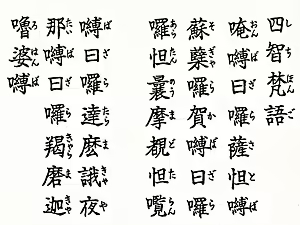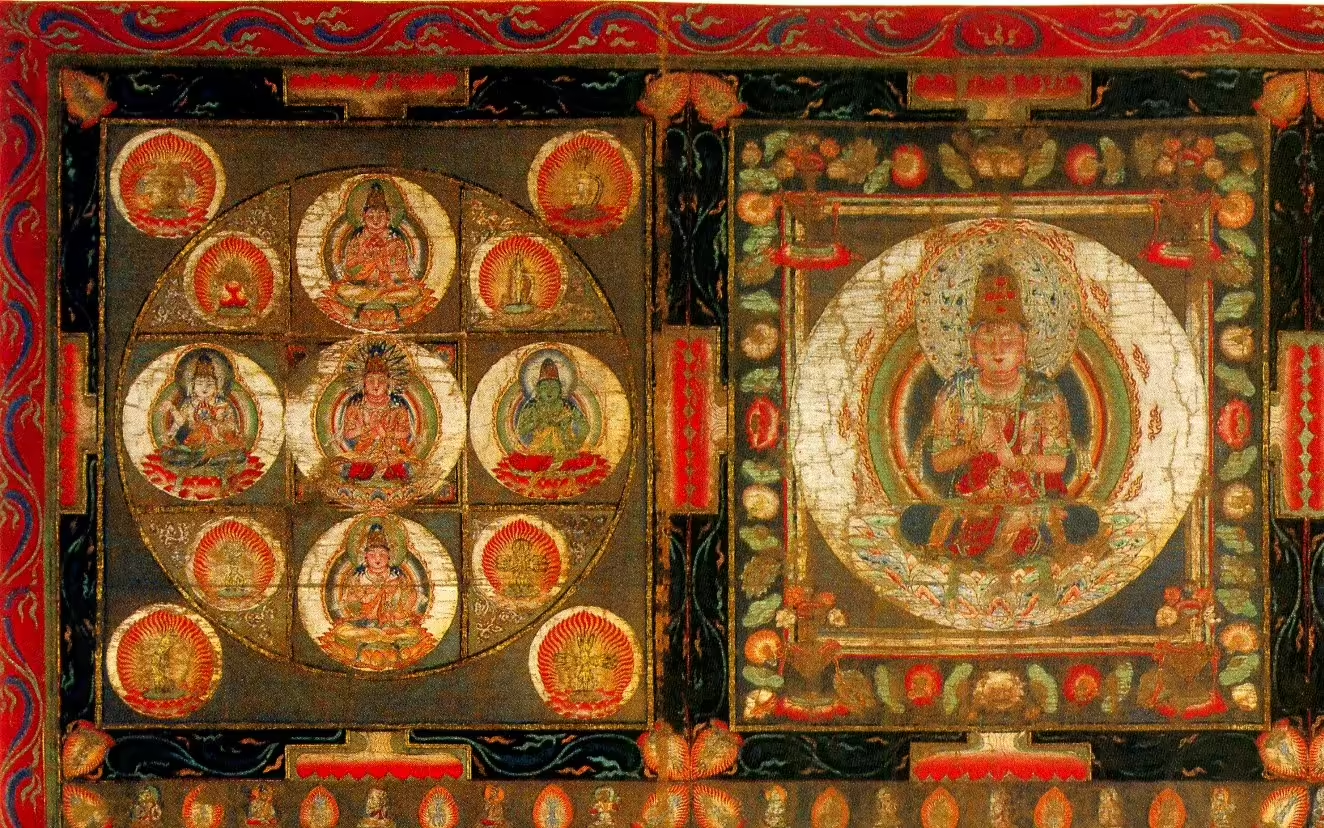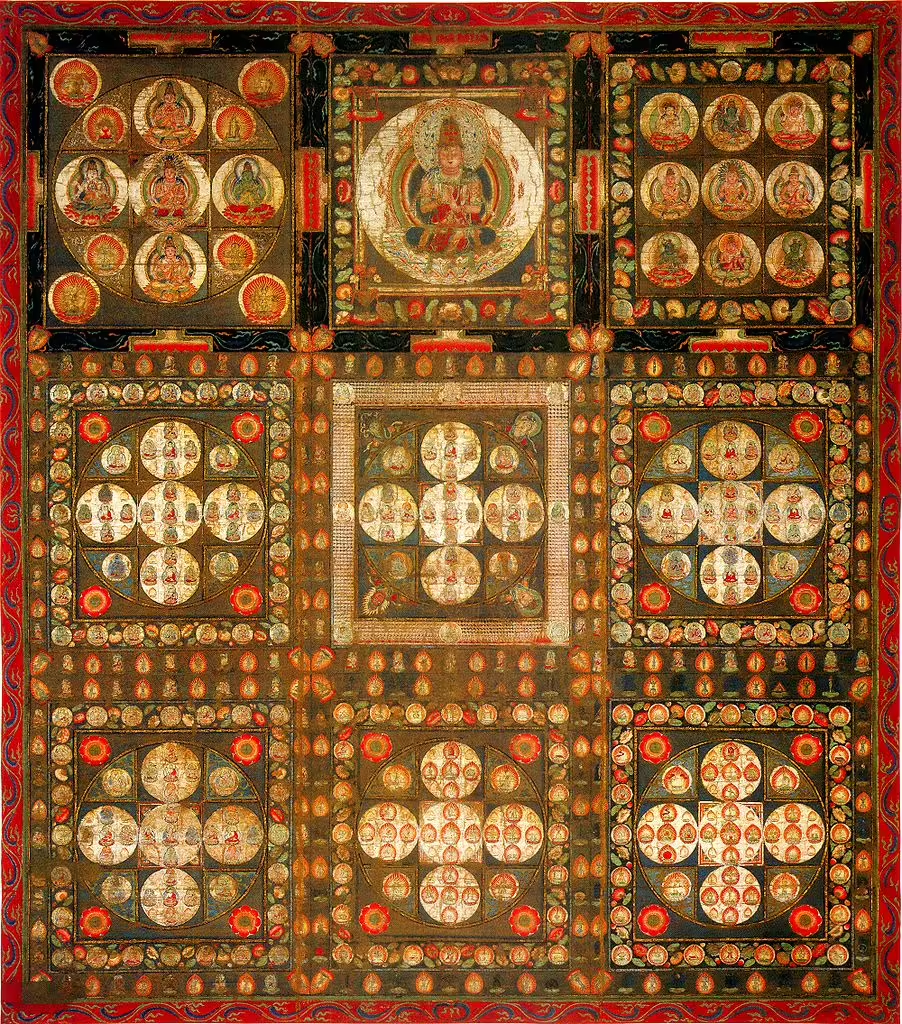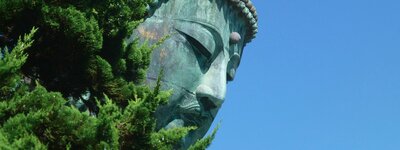A friend asked me about if I knew a Japanese Buddhist prayer suitable for a funeral. I knew that at funerals and memorial services, the monks chant Buddhist text in bongo (梵語), a Japanese transliteration of Sanskrit. The practice is known as shōmyō (声明) and a text that is often chanted is called shichi (四智), “the Four Wisdoms”, or shichibongo (四智梵語) in full.
The Four Wisdoms text in Japanese
Traditionally, shōmyō texts are written using specific and quite unusual Chinese characters, but they are used purely for their phonetic value, not for their meaning. Here is the text in full, from the site of the Buzan sect of Shingon Buddhism. It also has a recording of the chanting.

The same text with only very minor differences is used also by the sects of Tendai Buddhism, but I focus here on Shingon only for convenience. The word shingon (真言, lit. “True Words”) is the translation of the Sanskrit word Mantra.
From the Japanese text to the original Sanskrit
I found the kanji and katakana for this text in a Japanese academic paper on the meaning of the shichibongo:
四智梵語
オム バザラ サトバ ソギャラカ
唵 嚩日囉 薩怛嚩 蘇蘗 囉賀
バザラ アラタンノウ マドタラン
嚩日囉 囉 怛 曩 摩覩怛覧
バザラ タラマ キャヤタイ
嚩日囉 達 麽 誐 夜那
バザラ キャラマ キャロ ハムバ
嚩日囉 羯 磨 迦 嚕 婆 縛
This transliterates in romaji as:
shichibongo
om bazara-satoba sogyaraka
bazara-aratannou madotaran
bazara-tarama kyayatai
bazara-kyarama kyaro hamba
The same paper also gave the original Sanskrit phrasing, transliterated in the roman alphabet:
oṃ vajrasattva samgrahād
vajraratnam anuttaraṃ
vajradharma gāyanair
vajrakarma karo bhava
What does the Sanskrit text say?
The Sanskrit version allowed me to search for a translation. I found one in a book on Japanese music that discussed shōmyō:
Oṃ.
Receiving the blessing of the wisdom of Vajra-sattva,
we obtain the ultimate vajra-ratna.
By chanting the vajra-dharma,
we may attain the vajra-karma of enlightenment.
I am not familiar with esoteric Buddhism so I found this translation hard to understand. I therefore looked a bit further into this.
Some background on esoteric Buddhism
First, we need to know about Vajrayana, also know as Esoteric Buddhism, the Buddhist tradition of which Shingon Buddhism is a branch. According to the according to the Encyclopaedia Britannica:
Vajrayana, (Sanskrit: “Diamond Vehicle” or “Thunderbolt Vehicle”) form of Tantric Buddhism that developed in India and neighbouring countries, notably Tibet. Vajrayana, in the history of Buddhism, marks the transition from Mahayana speculative thought to the enactment of Buddhist ideas in individual life. The term vajra (Sanskrit: “diamond” or “thunderbolt” ) is used to signify the absolutely real and indestructible in a human being, as opposed to the fictions an individual entertains about himself and his nature; yana is the spiritual pursuit of the ultimately valuable and indestructible.
And further:
Vajrayana first emerged in various parts of India and Sri Lanka. The esoteric nature of Tantric doctrine and practice makes identifying the origins of the Vajrayana school difficult, but some Buddhist traditions associate them with Nagarjuna and Asanga and therefore suggest that Vajrayana began to develop quietly in the 2nd or 4th century CE. Vajrayana was prominent in India and Tibet, and a form of it spread to China and then to Japan, where it became associated with the Tendai and Shingon schools.
Then, we need to know about the concept of the mandala. Again according to the Encyclopaedia Britannica:
Mandala, (Sanskrit: “circle”) in Hindu and Buddhist Tantrism, a symbolic diagram used in the performance of sacred rites and as an instrument of meditation. The mandala is basically a representation of the universe, a consecrated area that serves as a receptacle for the gods and as a collection point of universal forces.
The Mandala of the Diamond Realm
Shingon Buddhism makes frequent use of two mandalas, the Mandala of the Womb Realm and the Mandala of the Diamond Realm (Kongōkai Mandala, 金剛界 曼荼羅). kongō (金剛) means “diamond” or “adamant, and is a translation of the Sanskrit “vajra”. These realms and their composition are based on an esoteric Buddhist sutra called the Vajrasekhara Sutra.
The Diamond Realm (金剛界 Kongōkai) is a metaphysical space inhabited by the Five Wisdom Buddhas.
In Shingon Buddhism, there is a group of deities, known as the Vajra Bodhisattva. The “Four Wisdoms” refers to the four Vajra Bodhisattva that surround Dainichi Nyorai in the Shiin-e (四印会) section of the Kongōkai Mandala.

The Dainichi Nyorai (大日如来) is the Buddha in the highest form of existence, dharmakaya, hosshin (法身) in Japanese.
Finally, back to the Four Wisdoms
Thus the Four Wisdoms of the text refer to these four Vajra Bodhisattva:
- Kongōsatta 金剛薩埵 ( Vajra-sattva, “diamond being”)
- Kongōhō 金剛宝 ( Vajra-ratna, “diamond treasure”)
- Kongōhō 金剛法 ( Vajra-dharma, “diamond law”)
- Kongōgyō 金剛業 ( Vadra-karma, “diamond action” ).
According to the explanation on the site of the Buzan sect, these four bodhisattva are identified with the four wisdom buddha surrounding Dainichi Nyorai in the Five Wisdom Buddhas:
“The Four Wisdoms represents the wisdom of the four Wisdom Buddhas, and by making offerings to each other, the Four Wisdoms represent the entire mandala of Vajrayana, with Dainichi Nyorai in the center.”

- The banner picture is of the Great Buddha of Kamakura.
